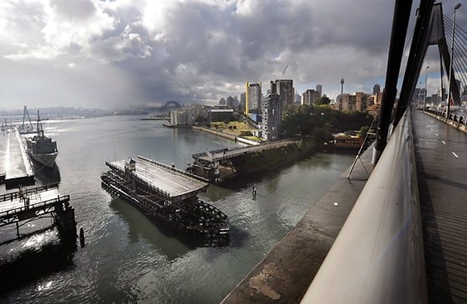Worrying about Heritage and its destruction is nothing new. In 1397 Dick Whittington (Lord Mayor of London) campaigned, inter alia, against watered beer and the destruction of old walls and monuments.1
Centuries later, in an environment where politicians are ‘gung-ho on growth’, we remain concerned about the destruction of our heritage. Heritage concerns are being subtly downplayed and denigrated by both government and the development lobby as being ‘non-issues’, ‘nimby-ism’ and/or anti-development.
Glebe suffered under the rampant development policies of the execrable Askin Government in the late ’60s and early ’70s, so we understand the need for community consultation and deep reflection before action. It is the community, after all, which has to live with the consequences.
The highlight of the reporting year was the listing of the Glebe Island Bridge on the State Heritage Register. The Glebe Society was one of many organisations which supported the National Trust’s push for the Bridge’s heritage listing. This was in the face of a concerted effort by RMS to have the Bridge demolished (and eerily echoed an attempt by Government to demolish the nearby Pyrmont Bridge in the 1980s). The Glebe Society argued for the retention of the Bridge, not only on important heritage grounds, but as a potentially valuable conduit for cyclists and pedestrians to and from the city.

Plans are under way to create a community event which will focus on this latter element. The nearby heritage-listed Pyrmont Bridge, was quoted (in 2009) as carrying 5 million pedestrians a year. These figures give some indication of the potential usefulness of the Glebe Island Bridge in managing Sydney’s traffic congestion.
The Glebe Estate and its residents are a longstanding and integral part of Glebe life. The deterioration of the Glebe Estate has been an ongoing cause for concern. It has been heartening to see work now being undertaken in the Glebe Estate to repair and maintain its heritage infrastructure. On the other side of the balance, however, we note the Government’s intention to dispose of public housing in the heritage-listed Millers Point area.
We were delighted to have Michael Lech from Sydney’s Living Museums (Historic Houses Trust) talk to members about the rise and fall of Grace Bros Department Store. Subsequently, several Heritage Subcommittee members took up Michael’s invitation to visit the Trust premises for an inspection of Glebe items from their collection.
The Subcommittee has spent considerable time in augmenting and reviewing heritage entries on the Glebe Society’s website. We have had consultations with the Communications Subcommittee in an effort to streamline material, improve access and smooth navigation around the website.
The Glebe Diggers’ Memorial has undergone a beautiful restoration and is now lit at night. A new gate, which is due to be installed by the end of this year, will complete the work. Restoration work was completed in time for an inaugural formal Remembrance Day service in 2013.
And the watered beer about which Whittington also campaigned? There are still media reports that beer is being watered down … It would seem that some worries are always with us.
I would like to record my grateful thanks to Heritage Subcommittee members for their encouragement and support.










There are no comments yet. Please leave yours.